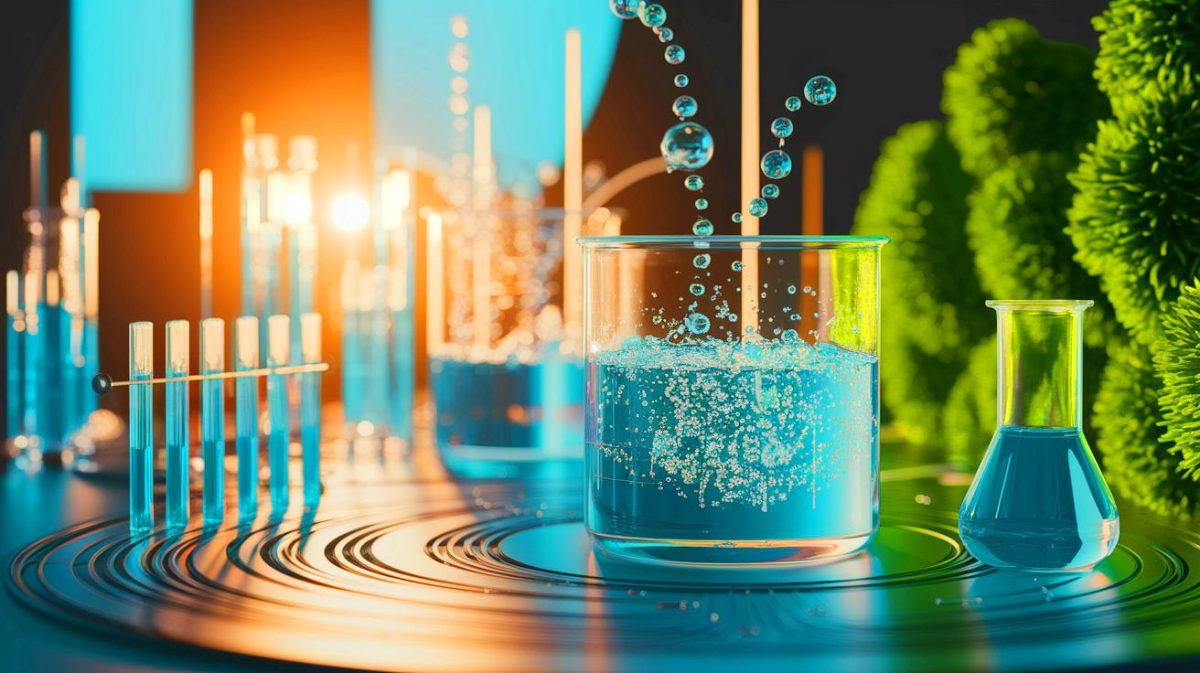| IN A NUTSHELL |
|
The world is on the cusp of a revolution in clean energy, thanks to groundbreaking research from the University of Alberta. Scientists have devised an innovative method to split water into hydrogen and oxygen using sunlight, urea, and nanowires. This could potentially transform the way we produce hydrogen fuel, making it a more viable and sustainable alternative to fossil fuels. By eliminating the need for expensive solar panels and electrolysis, this technique promises to be more efficient and cost-effective, paving the way for a cleaner energy future.
The Science Behind the Breakthrough
At the heart of this innovation is the process of splitting water molecules using sunlight. The team, led by Karthik Shankar, employs a novel approach that utilizes carbon nitride, a material that absorbs sunlight and energizes its electrons. This process involves a chemical transformation called thermal condensation polymerization, where urea is converted into carbon nitride. When sunlight hits this material, it excites the electrons, creating electron-hole pairs. These pairs are crucial for the subsequent reactions that produce hydrogen and oxygen gases.
To prevent the recombination of these electron-hole pairs, titanium dioxide is introduced. This material forms a junction with carbon nitride, effectively keeping the electrons and holes separated long enough to react with water molecules. The electrons interact with protons to produce hydrogen gas, while the holes react with hydroxyl ions to release oxygen gas. This technique not only leverages abundant and low-cost materials but also minimizes energy loss, which is a significant drawback of traditional water-splitting methods.
Advantages of This Method
One of the standout features of this method is its ability to harness diffuse sunlight, meaning it can work on cloudy days and doesn’t rely on direct sunlight. This capability is achieved through the use of nanowires that capture sunlight from various angles, making the system more versatile and efficient. Another significant advantage is the elimination of large storage batteries. The hydrogen gas produced serves as the energy storage medium, allowing for easy transport and use.
Furthermore, this method offers environmental benefits by avoiding the energy-intensive and polluting processes associated with manufacturing silicon solar panels. By using materials like urea, which is inexpensive and widely available, the process is both environmentally friendly and economically viable. This breakthrough could accelerate the transition to clean energy, reducing reliance on fossil fuels and decreasing carbon emissions globally.
Potential for Widespread Adoption
This innovative approach to hydrogen production holds immense promise for global energy independence. Currently, the production of silicon, essential for traditional solar panels, is concentrated in countries like China and Russia. By contrast, the materials used in Shankar’s method are accessible worldwide, enabling countries to harness their resources for clean energy production. The team is also exploring the use of melamine as an alternative to urea, as well as adaptations to produce hydrogen from methanol, broadening the technique’s applicability.
The researchers are optimistic that this method could be scaled for commercial use within the next three to five years. Such a timeline suggests that the energy sector could soon see a paradigm shift, with hydrogen becoming a more prominent player in the global energy mix. The potential for this technology to reshape energy landscapes is substantial, and its success could signal a new era of energy sustainability.
The Future of Clean Energy
As the world grapples with the challenges of climate change and energy security, innovations like this offer a beacon of hope. By providing a cleaner, more efficient way to produce hydrogen, the University of Alberta’s research could significantly reduce carbon footprints and foster a more sustainable future. The team’s work, published in the Journal of the American Chemical Society, underscores the importance of continued investment in scientific research and development.
As we stand on the brink of a new energy frontier, the question remains: How will industries and governments adapt to these advancements, and what role will hydrogen play in shaping our collective future? The answers could redefine how we power our world, ushering in a new era of sustainable energy solutions.
Did you like it? 4.8/5 (25)









Wow, this is a game-changer! Can’t wait to see how it unfolds. 🌍
Isn’t urea a waste product? How safe is this method for the environment?
Why can’t they just use regular sunlight? 🤔